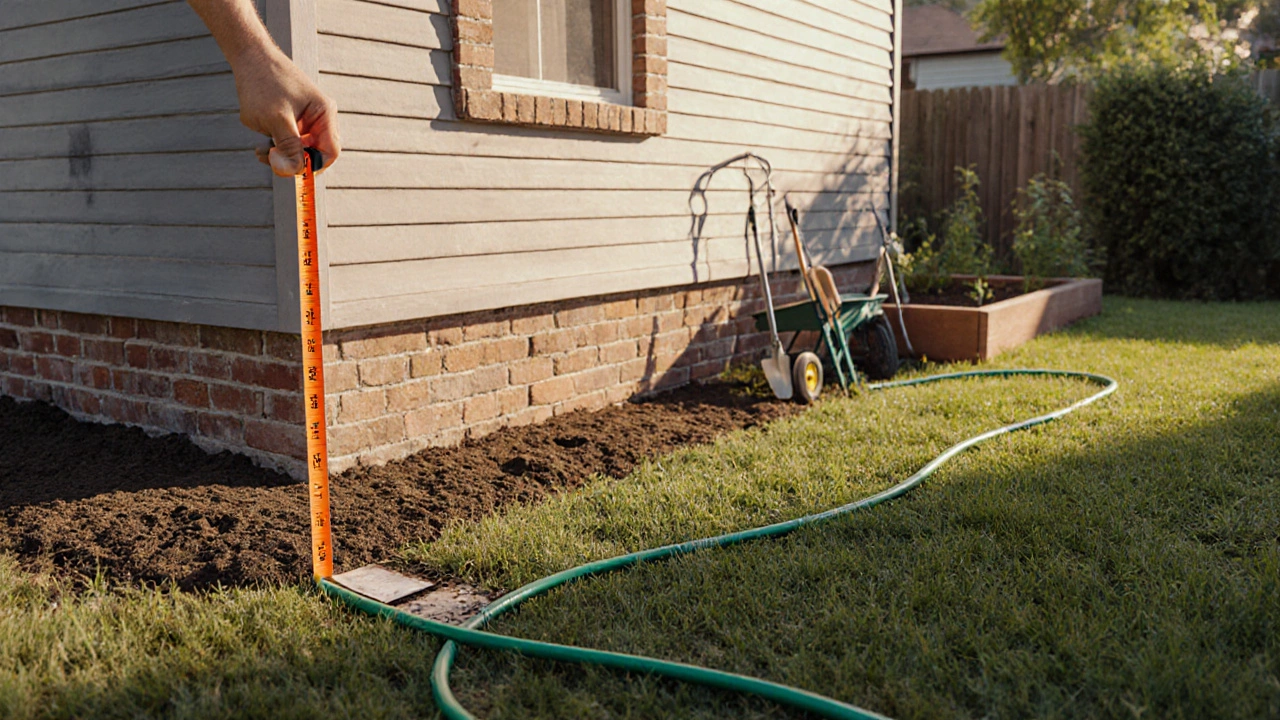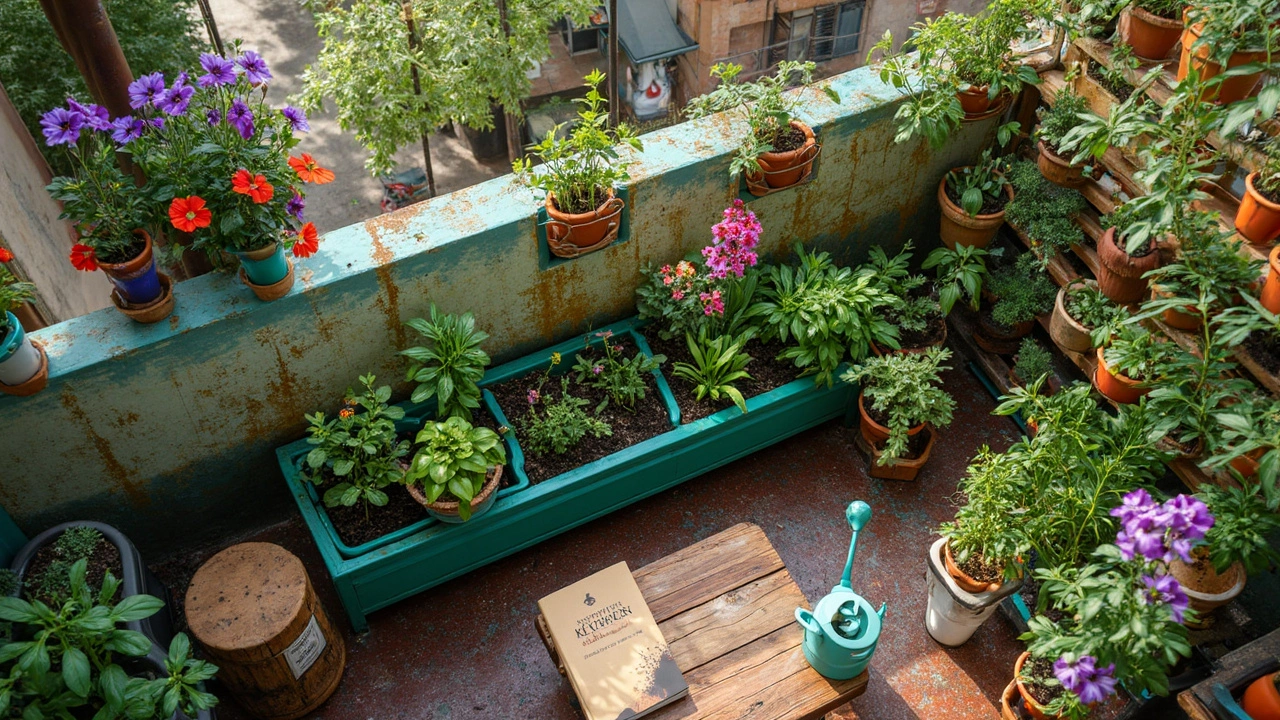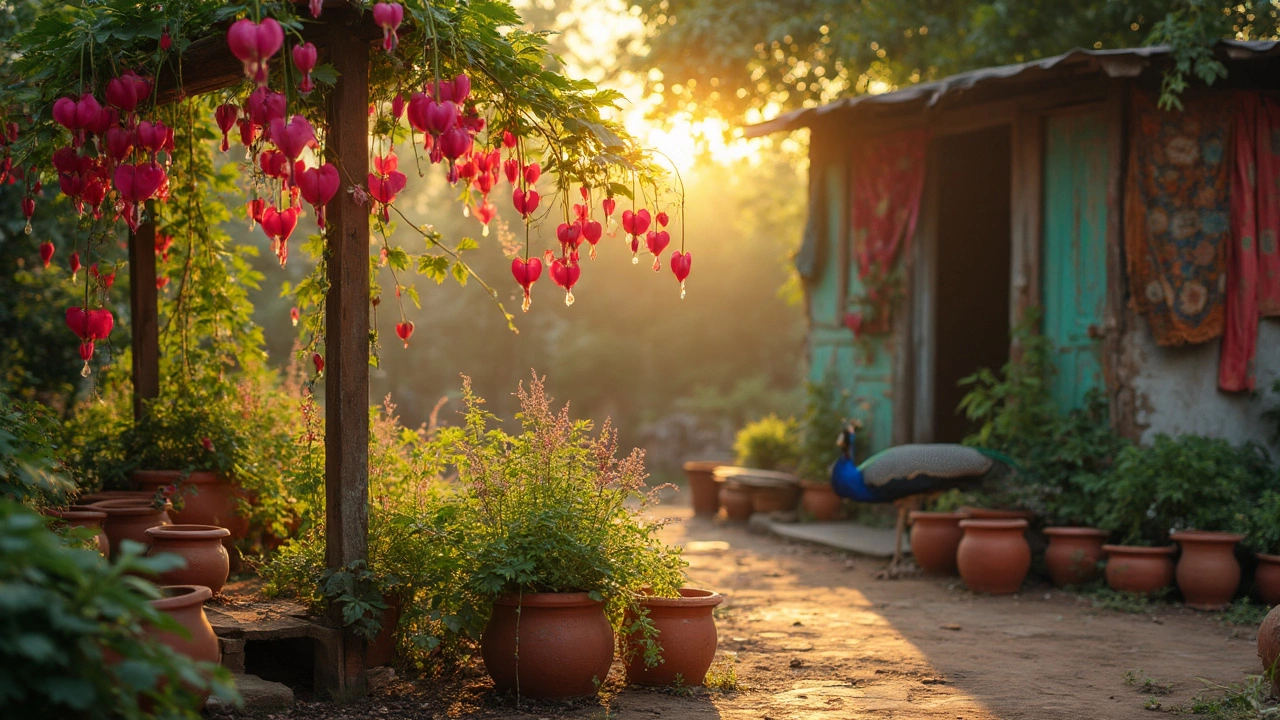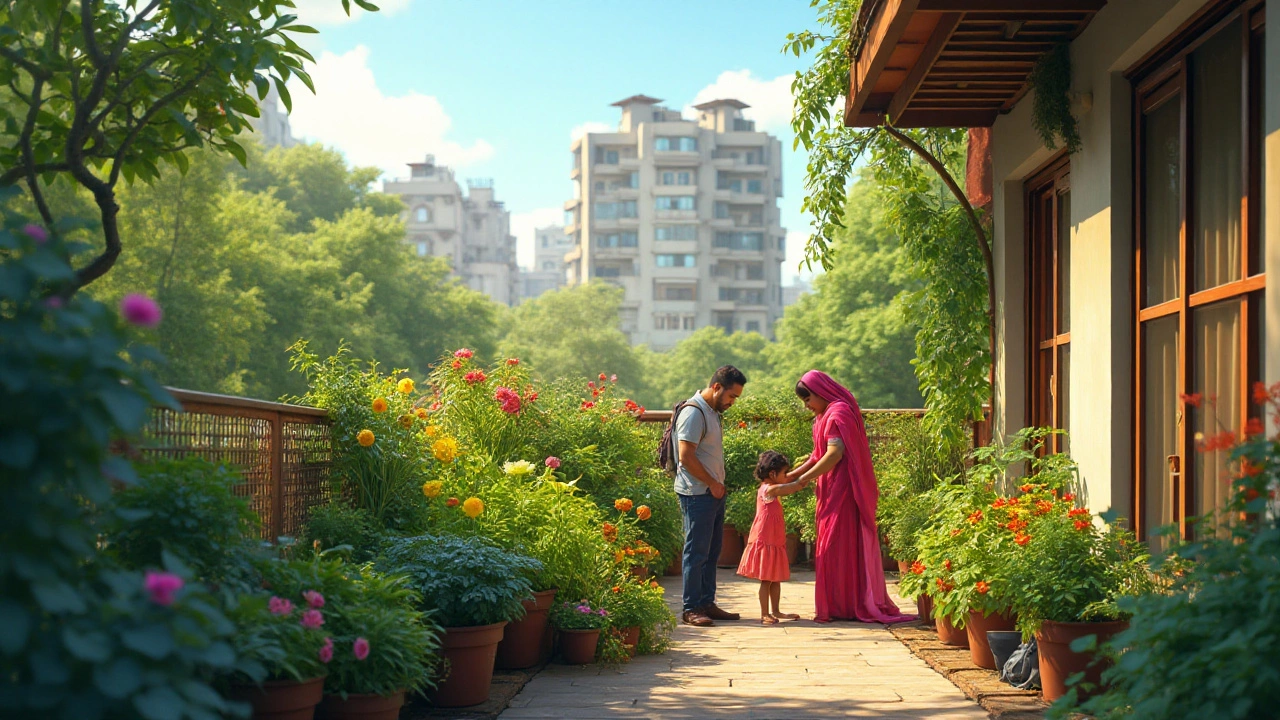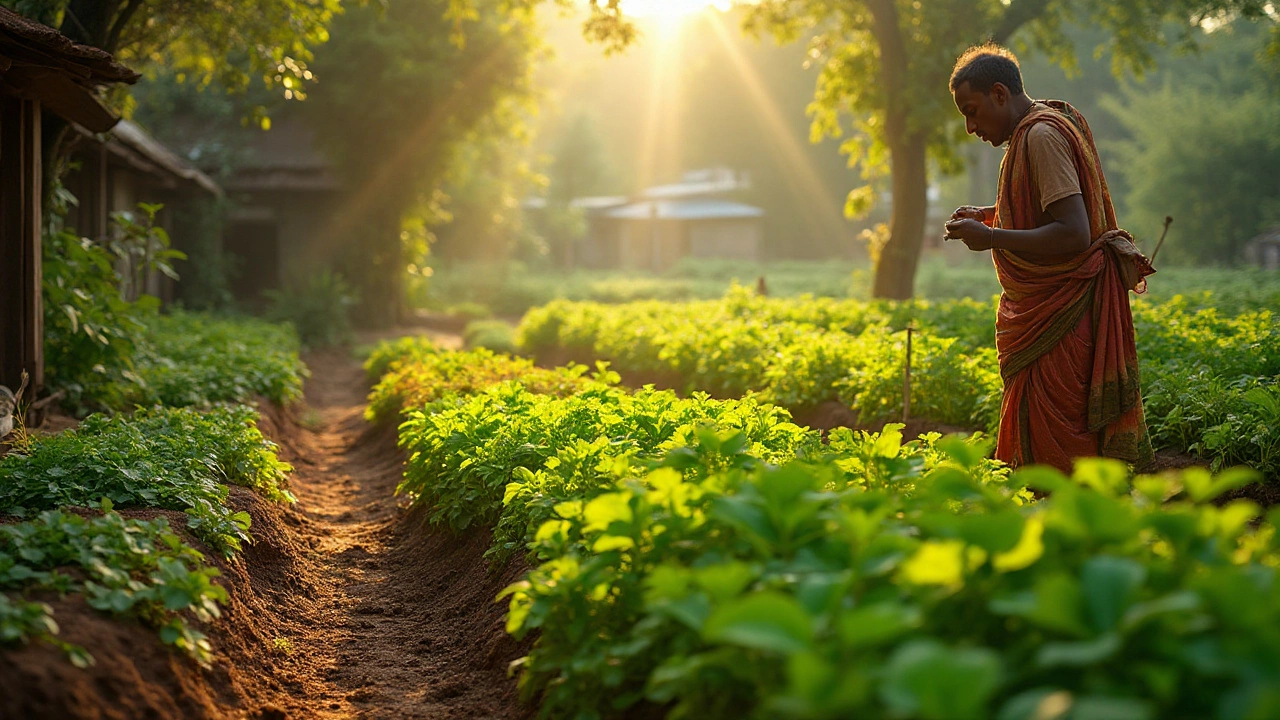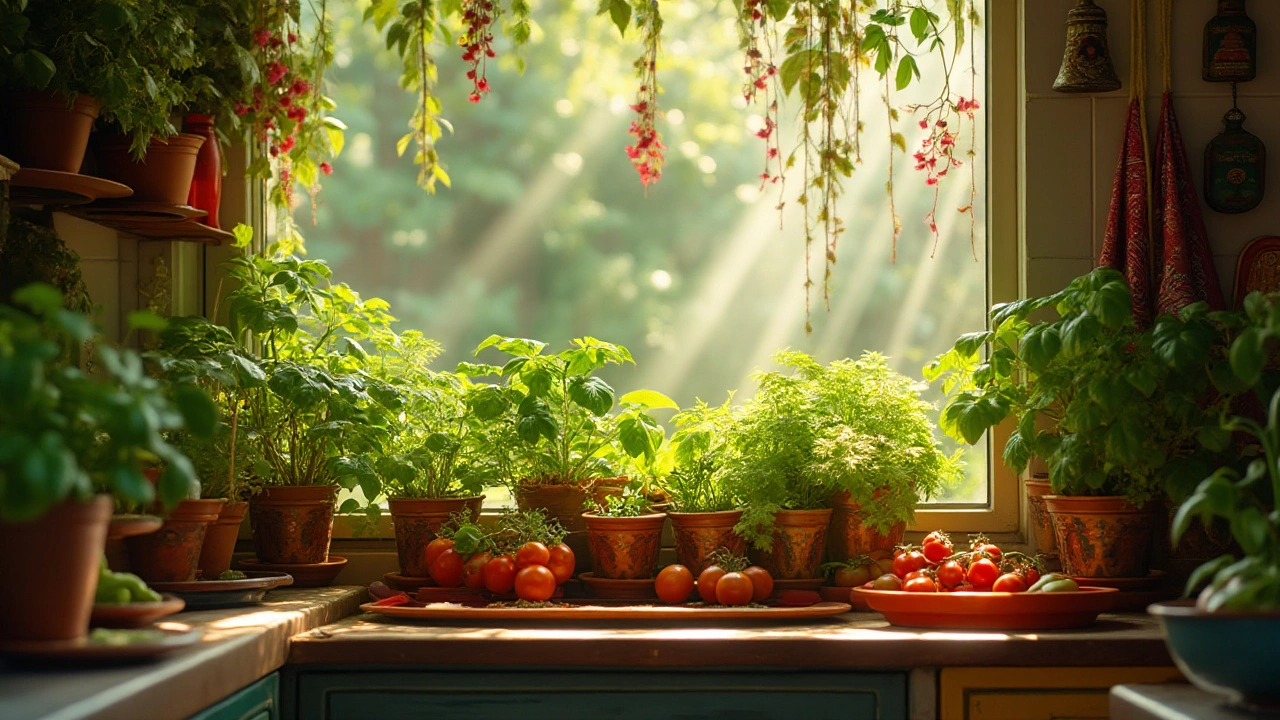Kitchen Garden Essentials: Grow Fresh Food at Home
Want veggies and herbs right outside your kitchen door? A kitchen garden lets you pick fresh leaves, tomatoes, or chillies without stepping into a supermarket. You don’t need a huge backyard – even a balcony or a tiny patio can become a productive food plot if you plan it right.
First thing, decide what you’ll grow. Pick vegetables you use often and that grow well in containers: basil, mint, coriander, lettuce, cherry tomatoes, and green beans. Herbs love sunny spots, while leafy greens can tolerate a bit of shade. Knowing your favorite dishes helps you choose the right plants and keeps the garden exciting.
Smart Space Planning for Small Areas
When space is limited, think vertically. A simple wooden trellis or a hanging shoe organizer turned into a plant pocket can hold dozens of seedlings. Stacking pots on a sturdy shelf lets you use the vertical height of a balcony railing. Mix deep containers for root‑y crops like carrots with shallow trays for herbs – each plant gets the soil depth it needs.
Group plants by water needs. Those that love moisture, such as lettuce, should sit next to a drip line, while drought‑tolerant herbs like rosemary can share a drier corner. This pairing cuts watering time and prevents over‑watering some plants while under‑watering others.
Don’t forget the soil. A good mix of garden soil, compost, and a bit of sand makes a light, well‑draining medium. For containers, use a ready‑made potting mix and add a handful of worm castings every few weeks – it feeds the microbes that keep plants healthy.
Water‑Smart Practices: Drip Irrigation Made Simple
One of the easiest ways to keep your kitchen garden thriving is drip irrigation. Instead of spraying water over the whole area, a small tube delivers moisture right to the root zone. This saves water, reduces weed growth, and cuts the risk of fungal diseases.
To set it up, lay a thin‑walled drip tape along each row of pots or directly inside the containers. Connect the tape to a simple timer that waters for 5‑10 minutes in the early morning. Adjust the timing based on the season – hotter months may need a longer run.
If you’re on a budget, reuse old garden hoses. Cut them into short lengths, poke a few small holes with a needle, and attach a low‑flow valve. Test the flow before you bury the line; you want a slow, steady drip, not a gush.
Another tip: let tap water sit for a few hours before using it. This allows chlorine to evaporate, which is better for sensitive herbs like basil. A small bucket or container works fine – just remember to stir occasionally.
Finally, keep an eye on the soil. Stick your finger a couple of inches deep; if it feels dry, it’s time to water. Over‑watering is the most common mistake, and with drip irrigation you can avoid it by setting the timer to short bursts and checking the moisture daily.
With these simple steps – picking the right plants, using vertical space, and installing a low‑cost drip system – your kitchen garden can produce fresh, tasty food all year round. Start small, learn what works for your climate, and watch your little garden turn into a big source of flavor for every meal.
How Far Should a Garden Be From Your House? Practical Setback Guidelines
Discover the optimal garden setback distance from your house, covering safety, moisture, fire risk, and legal guidelines for a thriving kitchen garden.
How Much Space Do You Need for a Kitchen Garden?
Wondering if you have enough space for a kitchen garden? This article helps you understand the space you'll need by exploring various kitchen garden setups from small herb boxes to larger systems. We'll consider factors like plant types, garden styles, and placement, ensuring you're well-equipped to cultivate fresh produce right at home. With practical tips and space-saving techniques, this article is a must-read for any aspiring gardener with limited room.
Planting Bleeding Hearts: The Ultimate Guide for Your Kitchen Garden
Thinking about adding some charm to your kitchen garden? Bleeding hearts aren't just pretty—they're easy to care for, too. This article dives into where to plant them for the best growth, key care tips, and interesting facts you might not know. Perfect for any gardener looking to mix beauty with practicality.
Ultimate Guide to Creating a Thriving Kitchen Garden
Kitchen gardens offer a sustainable and rewarding way to grow fresh produce right at home. They can be tailored to fit any space, large or small, and provide numerous benefits beyond fresh vegetables, including enhanced well-being and family bonding. This guide explores essential steps, helpful tips, and creative ideas to start your kitchen garden, whether you're an urban dweller with a balcony or have a spacious backyard. Discover how to select the right plants, use eco-friendly practices, and create a beautiful and productive garden that flourishes throughout the seasons.
Best Locations for Your Kitchen Garden: Tips and Ideas
Choosing the right spot for a kitchen garden can significantly impact the growth and health of your plants. Whether you're a seasoned gardener or a beginner, understanding the various factors that determine the best location for your garden is crucial. Consider the significance of sunlight, soil quality, and proximity to water sources. This article provides practical advice and insights to help you make informed decisions to create a thriving kitchen garden.
Grow Fresh Vegetables in Your Kitchen: A Complete Guide
Explore the world of kitchen gardening and bring nature into your home by growing vegetables right in your kitchen. This complete guide covers everything you need to know for successful indoor vegetable gardening, from selecting the right plants to creating a perfect growing environment. Discover creative space-saving solutions and learn how to enjoy a continuous supply of fresh produce. With practical tips and interesting facts, even beginners can start their own indoor garden with confidence.
About
Kitchen Gardening, Home and Garden
Latest Posts
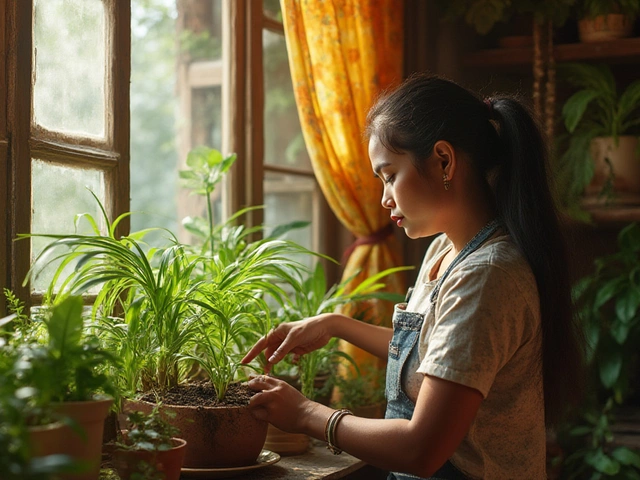

Exploring the Alternative Name for Drip Irrigation
By Alden Thorne Feb 10, 2025
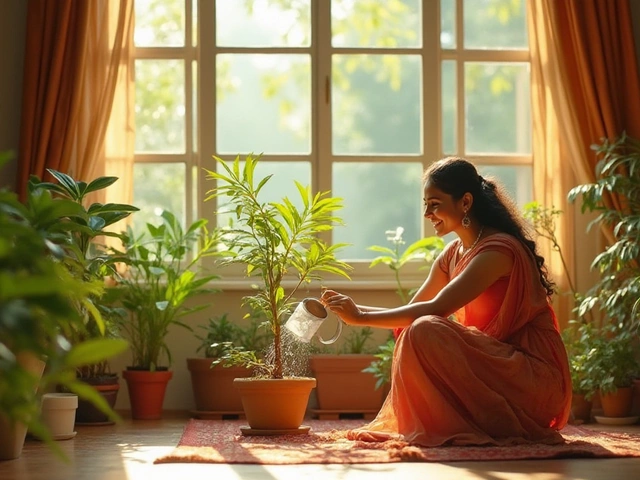
Essential Guide to Thriving Indoor Plants Care
By Alden Thorne Jan 21, 2025

Can You Do Regenerative Agriculture Without Animals? Straight Talk for Gardeners
By Alden Thorne Apr 17, 2025

